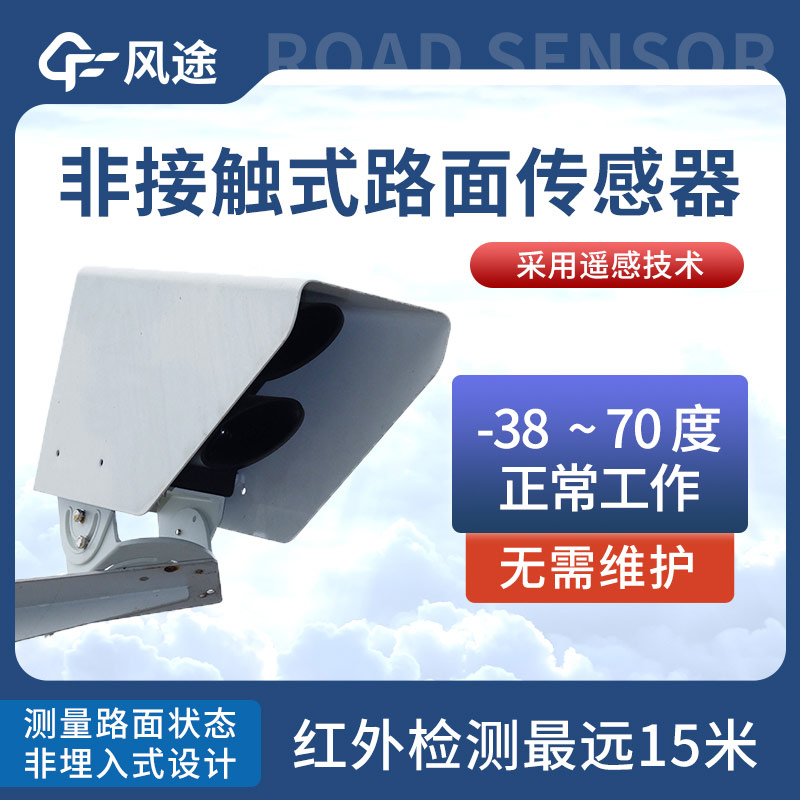Shandong Fengtu IOT Technology Co., Ltd
Sales Manager:Ms. Emily Wang
Cel,Whatsapp,Wechat:+86 15898932201
Email:info@fengtutec.com
Add:No. 155 Optoelectronic Industry Accelerator, Gaoxin District, Weifang, Shandong, China

Sales Manager:Ms. Emily Wang
Cel,Whatsapp,Wechat:+86 15898932201
Email:info@fengtutec.com
Add:No. 155 Optoelectronic Industry Accelerator, Gaoxin District, Weifang, Shandong, China
time:2024-09-12 13:13:18 source:Weather Station viewed:502 time
Non Contact Road Condition Sensor is the heart of an automatic traffic meteorological station. It detects wind speed and direction by measuring the time difference of ultrasonic waves traveling through the air, and monitors key meteorological parameters such as air temperature, humidity, and atmospheric pressure in real time. These sensors are specially designed to work in a variety of harsh atmospheric conditions, and can detect changes in the road surface, such as icing, snow accumulation, and water pooling, as well as their impact on road slipperiness.
The Non Contact Road Condition Sensor uses spectral remote sensing to measure the road surface. An infrared emitter is aimed at the road surface, and the emitted light is reflected back to the receiver from the pavement, allowing it to distinguish reflections caused by water and ice at specific wavelengths. This highly sensitive detection capability enables the sensor to detect signs of the road surface becoming slippery when the ice layer reaches about 30 micrometers. The sensor can also differentiate between hard ice with low water content and soft ice containing a lot of water or salt, as hard ice, despite having less ice, is more slippery than soft ice.
The installation of Non Contact Road Condition Sensors is simple and does not require road disruption, so it does not interfere with traffic. They can be mounted on poles next to the road or as part of a meteorological station. Data from the sensors can be transmitted via communication interfaces such as RS485, making it easy to integrate with existing meteorological monitoring systems.

Agrometeorological stations are an important part of the agrometeorological monitoring field...
The distribution of global water resources is uneven, and many regions are facing serious water shortage problems. With population growth, economic development and the acceleration of urbanization, the demand for water resources is constantly increasing, while the available water resources are very...
Dissolved oxygen refers to the molecular oxygen dissolved in water, expressed as the number of milligrams of oxygen per liter of water (mg/L). It is an important indicator for measuring the self-purification capacity of water bodies and is crucial for the survival of aquatic organisms, the balance o...
water level sensors for water tanks Water level sensors for water tanks Water level sensors for water tanks, containers and reservoirs....